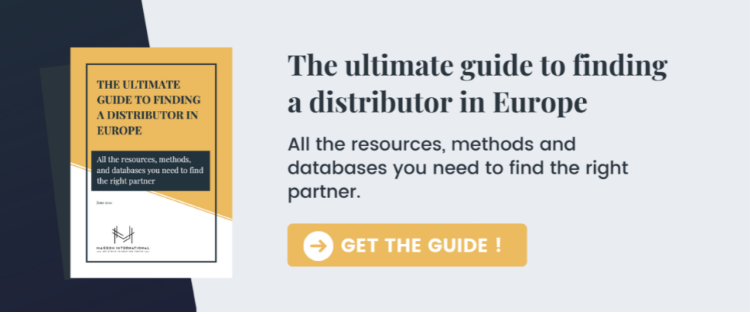International business requires impeccable attention to detail and rigorous planning. If a company wants to expand its sales overseas, an international distribution agreement will produce an agreement between parties for smooth business operation.
In addition to protecting the best interests of the company and its stakeholders, an international distribution agreement must also comply with applicable laws and regulations in both operating countries.
In this helpful guide, we’ll demonstrate how to write an international distribution agreement and give key terms and conditions every sound contract must include.
What Is a Distribution Agreement?
A distribution agreement is a legally binding contract between two global parties clearly outlining the conditions for distributing and selling one of the party’s products, services or softwares.
For example, a furniture manufacturer in France may be approached by a United States retailer who wants to distribute their products. The French manufacturer would need to draft an international distribution agreement that outlines all the details for selling their furniture overseas.
This article might interest you ⤵️
What Should a Distribution Agreement Include?

Any distribution agreement must respect applicable laws in both operating countries; additional detail must be paid to any international regulations and national laws that could influence the rights and responsibilities of one or both parties.
It is important to express whether the rights of the agreement are exclusive or non-exclusive. This indicates whether the receiving party will have the sole rights to resell the manufacturer’s products.
Additional sections of an international distribution agreement should include:
- Responsibilities of each party. There will be a section for each party outlining their core responsibilities as part of the agreement. These duties may include marketing the product in a specifically agreed-upon manner, providing financial forecasts at regular intervals, and placing orders according to the providing party’s standards.
- Products. This section will specify which products the retailer has the right to sell. It also reserves the manufacturer’s rights to discontinue products at any time, or make changes to their inventory.
- Pricing. The pricing section of a distribution agreement outlines how much the distributor may sell the manufacturer’s products for, how they must record payments, and how they must pay them (including timeframes, payment methods, and currencies).
- Terms of termination. Both parties can protect their interests by negotiating fair terms and conditions for termination should they decide to end their professional relationship. Additionally, terms of termination can also reserve the manufacturer’s rights to revoke the distributor’s retail rights based on certain criteria.
- Warranty. A distribution agreement warranty outlines how the product’s warranty will be maintained for customers who purchase it on the international market. The manufacturer can require the distributor to maintain their own warranty for products regardless of any individual policies they may have, so long as they do not violate any local or national laws.
- Liability waiver/indemnity clause. The manufacturer can also include a waiver in their agreement to avoid being held liable for any damages or losses the distributor incurs while selling their products. For example, liability does not extend to cover any injuries customers or employees of the distributor incur as the result of defective products.
- Territory. The contract can further specify which geographic areas the distributor is authorized to sell in and prohibit them from retailing any of the manufacturer's products beyond these regions.
- Minimum quantities ordered/sold – Sales Goals: this clause can force the distributor to sell a minimum yearly quantity. It can be part of an Annex to the document that is signed and updated each year if you need to adapt sales goals (if the local laws admit it).
- Terms and conditions for sales and returns: This section sets out the terms and conditions that apply to the sales and returns of the products.
- Dispute resolution mechanisms: Certain distribution agreements may comprise procedures to resolve any disputes or conflicts that may arise from the agreement, such as the provisions for negotiation, mediation, or arbitration, choice of law or jurisdiction, etc.
Search the Local Laws
It’s important that you research local laws in both territories prior to signing an international distribution agreement. The contract must be completely compliant with the laws and regulations of both territories, even those that only apply to one country.
How to Write a Good Distribution Agreement?
The best way to write a good distribution agreement is to comprehensively review all the laws and regulations in both parties’ headquartered countries. It can also be beneficial to consult with an attorney who specializes in international business.
Even after you’ve written your template, it’s wise to have a professional review it to ensure that it fully protects your business and complies with all relevant laws. The accidental exclusion of certain sections in a distribution agreement could render it null and void.
You must also ensure that when issuing the document, you specify that upon signing, all parties agree to be subject to the terms and conditions of this agreement, and will adhere to termination terms when applicable.
This article might interest you ⤵️
If you would like to expand your market into France, Switzerland, or Belgium, we can help. Please review our services and contact us to schedule a consultation.






